Define Our Future
26 January 2024
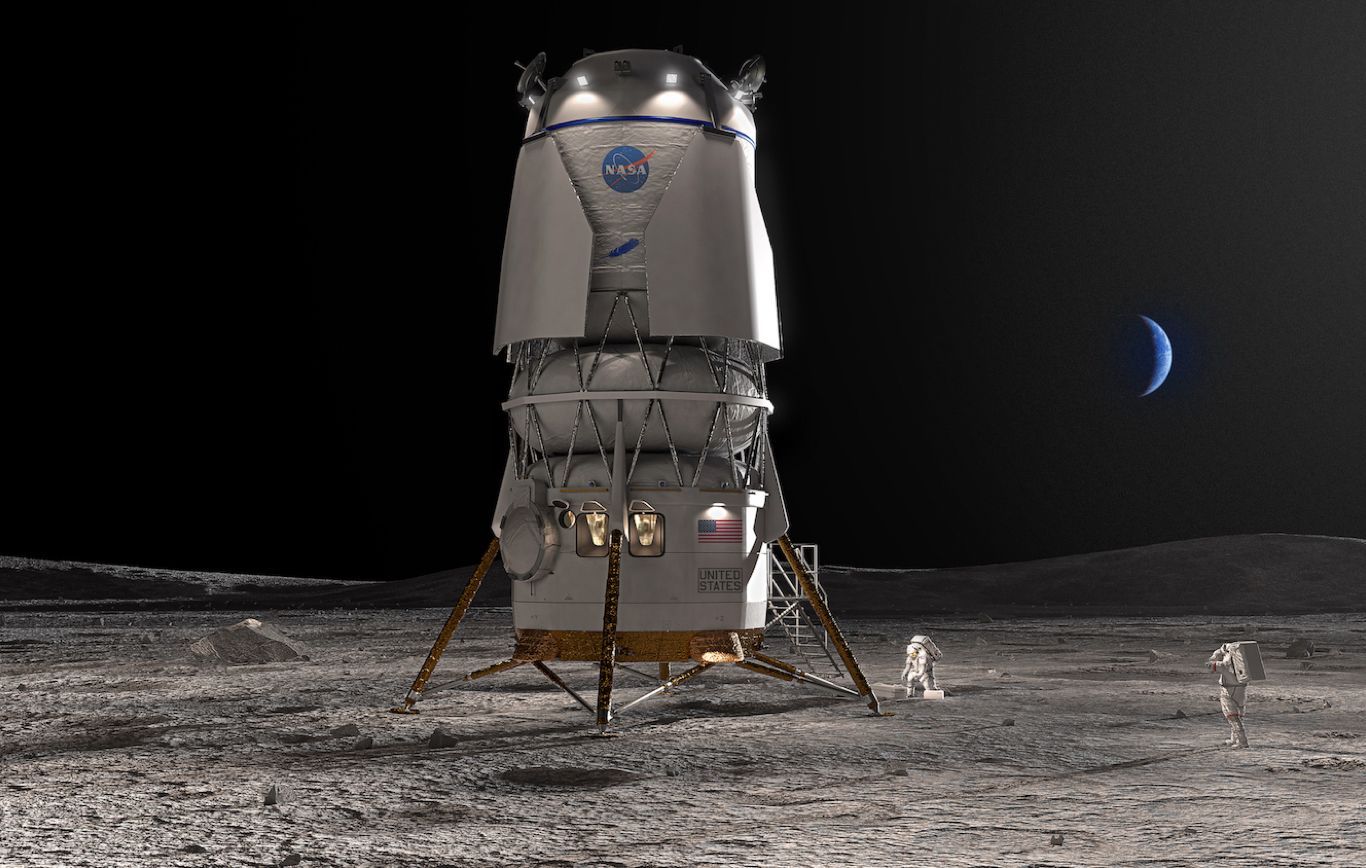
Blue Origin's Blue Moon Lander to be used for Artemis (Image - Blue Origin)
The Japanese Space Agency (JAXA) are remaining optimistic about reviving their SLIM lunar lander, after it was realised that the vehicle wasn’t generating power using it’s solar cells, after they became only the fifth nation to land softly on the Moon. Despite the concern that the lander may not reawaken, there is much to celebrate about the mission.
Shortly after arriving on the surface, the agency received all the data regarding the landing, and moreover, they achieved their primary goal, of a precise, pinpoint landing. "We proved that you can land wherever you want, rather than where you are able to," said Shinichiro Sakai, project manager for the lander.
It was revealed that it landed 55m metres from its intended target, but could have actually been more precise up to a distance of around 3m, if it wasn’t for experiencing some engine trouble. Nonetheless, this achievement opens the door for the possibility of more precise exploratory missions in future, which could be advantageous when e.g. looking to secure areas rich with resources, such as water.
Blue Origin and SpaceX have also taken steps forwards with their lunar ambitions, with NASA requesting them to begin work on cargo versions of their human landing systems, which they are currently developing to return humans to the surface of the Moon under the Artemis programme.
The cargo versions should be designed to deliver large amounts of payload to the lunar surface, opening the door for more rapid development of a lunar infrastructure, although no payloads have been identified yet.
The European Space Agency have also embarked on their journey towards establishing a permanent lunar base, after the announcement last year from ESA head, Josef Aschbacher, saying that Europe will “not miss the train” on economic opportunities in space, and a Moon base “will happen”. This week, architecture firm, Hassel, unveiled the design for a European lunar base, which incorporates the use of inflatable habitats, lifted from the surface and thus making minimal contact with abrasive lunar regolith.
With a busy agency and commercial lunar launch cadence in the coming years, combined with government funding and growing private investment, the lunar economy seems set on a growth trajectory.
Artemis Accords expands members, China outline plans for 2026 Moon mission
The US has continued to gather support for their regulatory framework for outer space, with Belgium this week becoming the 34th nation to sign up the Artemis Accords; the framework established in order to define best practices and responsible behaviour in space, also legitimising activities for resource extraction on places such as the Moon.
The Accords are also rivalling a similar Chinese plan, the International Lunar Research Station project (ILRS), which as gathered 11 members, including nations and institutes, and aims to construct a permanent lunar base in the next decade.
China have also outlined plans for their Chang’e-7 lunar mission, in a paper published this week. Due to launch in 2026, the mission aims to investigate regions of water ice in the lunar south pole, and will be made up of an orbiter, lander and a rover. Most importantly, their discoveries and analysis of water ice will be used to inform their plans for in-situ resource utilisation (ISRU), a critical component of establishing a permanent presence on the Moon.
With a heightening lunar race between the space superpowers of China and the US, a growing commercial presence and increasing competition, we can expect to see the continuing growth of these “space blocs”. But what else we can expect, especially with the lack of comprehensive universal legislative frameworks (such as the UN OST), is a potential clash between the two blocs, over issues such as appropriating territory on the Moon.
What will be vital in the coming years, to ensure ongoing peaceful uses of space, is increased dialogue between all parties. Or better still, would be agreement to work towards at least a basic legislative framework, perhaps governed by the UN, which reduces the risk of conflict in outer space. Otherwise, we may be greeted with the same story that humankind has written throughout history; where conflict arises over the potential of untapped resources.

Orbex Prime Rocket (Image - Orbex)
Landspace Demonstrate SpaceX-style Rocket Landing, Blue Bring Together New Glenn, Europe Further Push Native Rocket Startups
Another Chinese space phenomena is that of their burgeoning commercial launch sector, which has been taking leaps and strides recently. Only last year we read that Shanghai announced plans to develop an industrial chain for commercial rocket production, with the ability to produce 50 rockets per year.
Additionally we saw launch startup Landspace sending satellites into orbit for the first time in December, as well as impressive funding rounds for Space Pioneer (now almost valued at $500 million), and Galactic Energy, who secured an additional $154 million also in December.
On Friday, Landspace achieved another milestone, in carrying out a “hop test” of their Zhuque-3 rocket. The test involved launching the vehicle vertically to an altitude of 350m, before it landed vertically 100m away, demonstrating similar technology that was pioneered by SpaceX over a decade ago.
Chinese startups may still be some way behind SpaceX in their drive for affordable, reusable launch technology, but the pace of development cannot go unnoticed.
Blue Origin have also seen positive developments towards their reusable New Glenn rocket, with Jeff Bezos announcing that the two stages of the vehicle have been mated for the first time. It is designed to carry up to 45 tons of payload to low Earth orbit (LEO), roughly twice that of a Falcon-9 (SpaceX).
Additionally, the company has secured a contract with the US Space Force to explore the potential uses of New Glenn for national security missions. Blue were awarded nearly $18 million for “National Security Space Launch Phase 3 Lane 2 early integration studies to assess launch vehicle trajectory and mission design, coupled launch loads, and integrated thermal environments to inform compatibility between launch vehicles and space vehicles for missions planned in fiscal years 2025 and 2026.”
Europe continues transition to commercial launch model
ESA is continuing its move towards a US model of sourcing commercial launch partners, (as opposed to developing their own vehicles), providing funding and acting as “anchor customers” for European launch startups.
On Tuesday ESA and the European Commission selected five launch startups to take part in a new programme, designed to boost demand for European companies. The companies involved are Isar Aerospace (Germany), PLD Space (Spain), Orbex (UK), Rocket Factory Augsburg (Germany) and Ariane.
The aim of the ticket initiative is to pool European demand from both ESA/EU and also national governments, encouraging a clear “European preference” for launch providers.
Additionally, French launch startup Latitude have this week raised an additional $30 million towards the development of their small launch vehicle, Zephyr, designed to put payloads of up to 100kg into low Earth orbit.
Launch non-dependence and having a sovereign access to space has been high on the cards for ESA for some time, with ongoing delays from Ariane for their new Ariane-6 meaning nations have had to rely on outside partners, such as SpaceX.
Europe is also seeing the growth of private investment in the space sector, with notable funding rounds in past year for companies such as Isar Aerospace, who raised an impressive $165 million in March, and the UK alone becoming the leading place for space investment, after only the US.
With delays from Ariane and severed access to Russian launch technology, Europe has been lagging behind its competitors. However, this renewed focus on commercial startups may prove to be the stimulus Europe has long needed, with 2024 set to witness more debut launches. SpaceX may be leading the pack, but in the coming months and years, we are set to see more diversification in the growing launch market, reflecting a space industry that is rapidly on the rise.
Define Our Future
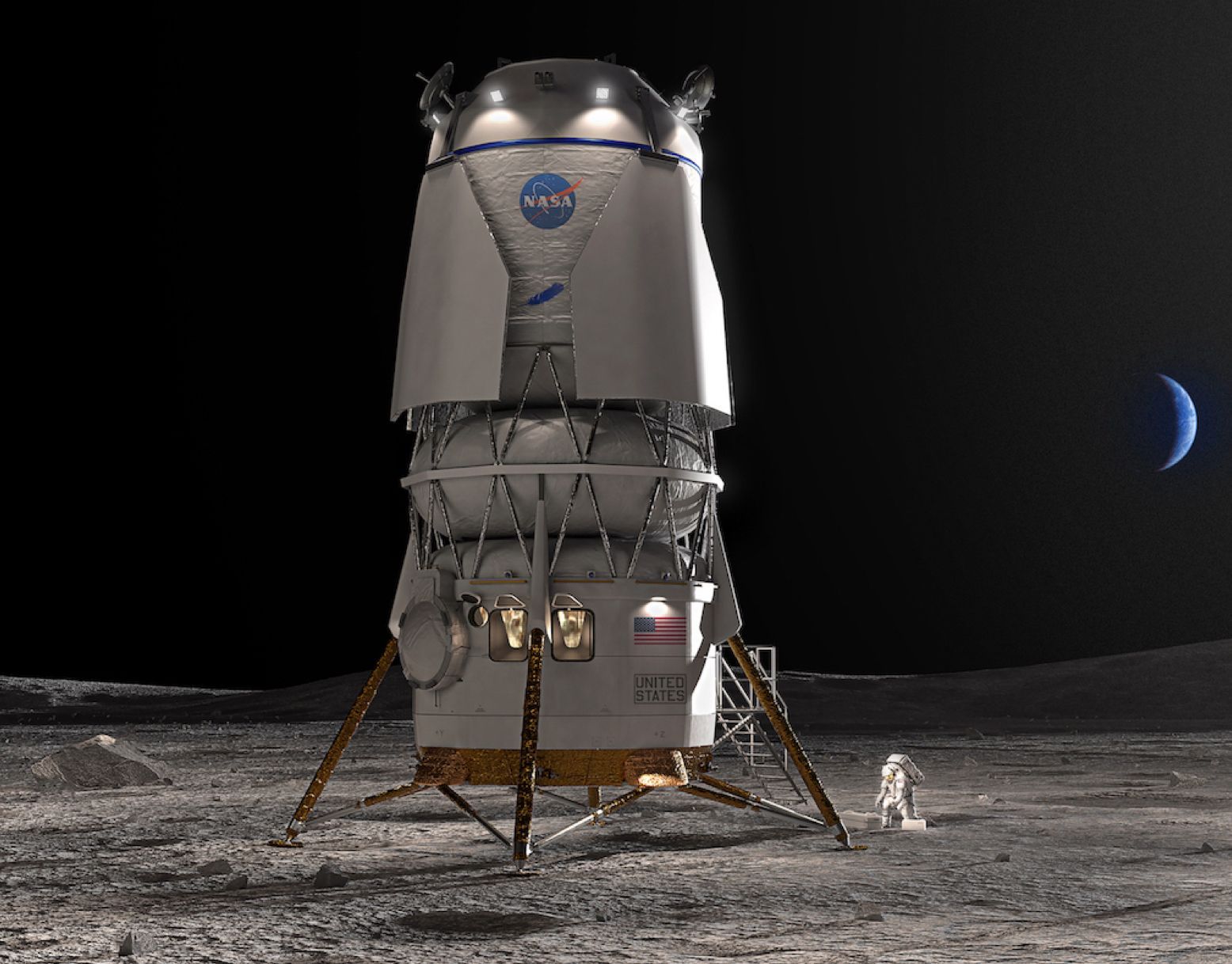
Blue Origin's Blue Moon Lander to be used for Artemis (Image - Blue Origin)
26 January 2024
JAXA announces precise landing, NASA explores cargo landers, and increased support for European launch startups - Space News Roundup
The Japanese Space Agency (JAXA) are remaining optimistic about reviving their SLIM lunar lander, after it was realised that the vehicle wasn’t generating power using it’s solar cells, after they became only the fifth nation to land softly on the Moon. Despite the concern that the lander may not reawaken, there is much to celebrate about the mission.
Shortly after arriving on the surface, the agency received all the data regarding the landing, and moreover, they achieved their primary goal, of a precise, pinpoint landing. "We proved that you can land wherever you want, rather than where you are able to," said Shinichiro Sakai, project manager for the lander.
It was revealed that it landed 55m metres from its intended target, but could have actually been more precise up to a distance of around 3m, if it wasn’t for experiencing some engine trouble. Nonetheless, this achievement opens the door for the possibility of more precise exploratory missions in future, which could be advantageous when e.g. looking to secure areas rich with resources, such as water.
Blue Origin and SpaceX have also taken steps forwards with their lunar ambitions, with NASA requesting them to begin work on cargo versions of their human landing systems, which they are currently developing to return humans to the surface of the Moon under the Artemis programme.
The cargo versions should be designed to deliver large amounts of payload to the lunar surface, opening the door for more rapid development of a lunar infrastructure, although no payloads have been identified yet.
The European Space Agency have also embarked on their journey towards establishing a permanent lunar base, after the announcement last year from ESA head, Josef Aschbacher, saying that Europe will “not miss the train” on economic opportunities in space, and a Moon base “will happen”. This week, architecture firm, Hassel, unveiled the design for a European lunar base, which incorporates the use of inflatable habitats, lifted from the surface and thus making minimal contact with abrasive lunar regolith.
With a busy agency and commercial lunar launch cadence in the coming years, combined with government funding and growing private investment, the lunar economy seems set on a growth trajectory.
Artemis Accords expands members, China outline plans for 2026 Moon mission
The US has continued to gather support for their regulatory framework for outer space, with Belgium this week becoming the 34th nation to sign up the Artemis Accords; the framework established in order to define best practices and responsible behaviour in space, also legitimising activities for resource extraction on places such as the Moon.
The Accords are also rivalling a similar Chinese plan, the International Lunar Research Station project (ILRS), which as gathered 11 members, including nations and institutes, and aims to construct a permanent lunar base in the next decade.
China have also outlined plans for their Chang’e-7 lunar mission, in a paper published this week. Due to launch in 2026, the mission aims to investigate regions of water ice in the lunar south pole, and will be made up of an orbiter, lander and a rover. Most importantly, their discoveries and analysis of water ice will be used to inform their plans for in-situ resource utilisation (ISRU), a critical component of establishing a permanent presence on the Moon.
With a heightening lunar race between the space superpowers of China and the US, a growing commercial presence and increasing competition, we can expect to see the continuing growth of these “space blocs”. But what else we can expect, especially with the lack of comprehensive universal legislative frameworks (such as the UN OST), is a potential clash between the two blocs, over issues such as appropriating territory on the Moon.
What will be vital in the coming years, to ensure ongoing peaceful uses of space, is increased dialogue between all parties. Or better still, would be agreement to work towards at least a basic legislative framework, perhaps governed by the UN, which reduces the risk of conflict in outer space. Otherwise, we may be greeted with the same story that humankind has written throughout history; where conflict arises over the potential of untapped resources.
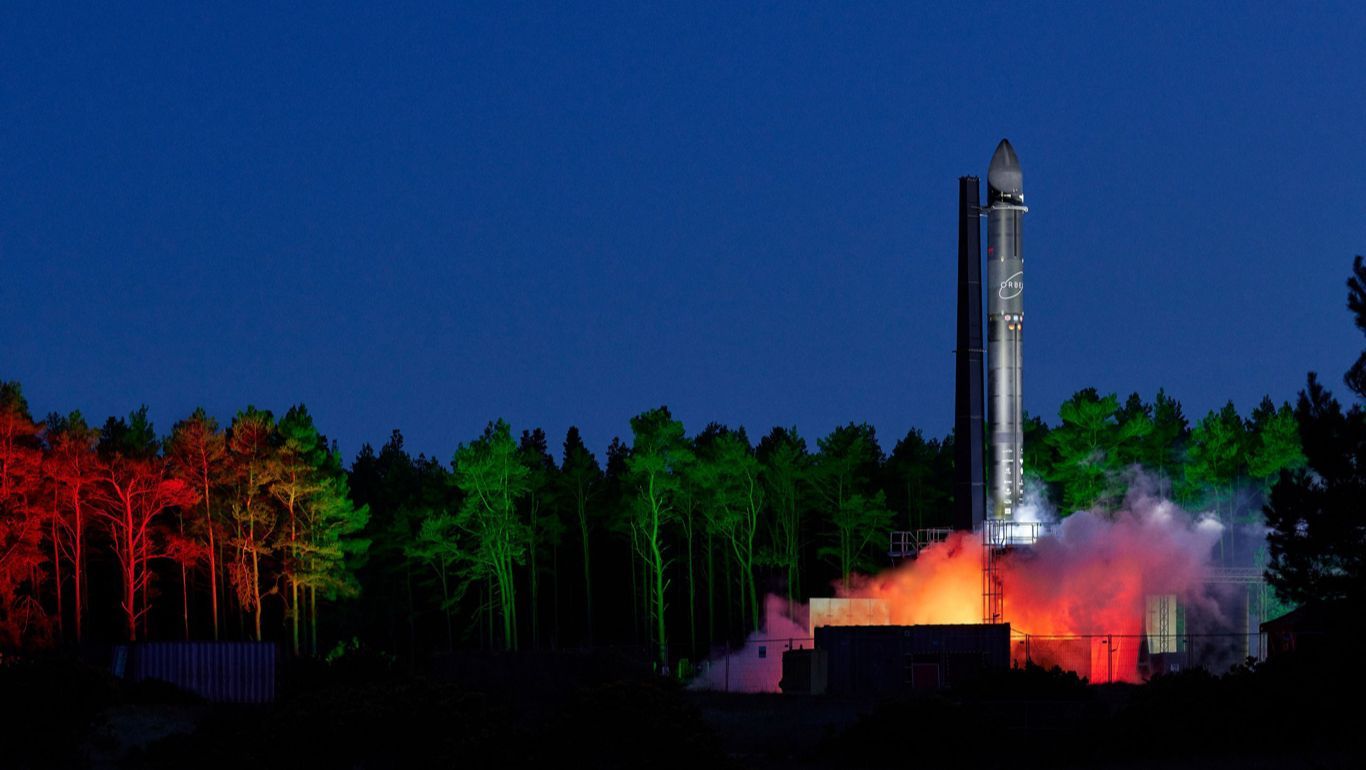
Orbex Prime Rocket (Image - Orbex)
Landspace Demonstrate SpaceX-style Rocket Landing, Blue Bring Together New Glenn, Europe Further Push Native Rocket Startups
Another Chinese space phenomena is that of their burgeoning commercial launch sector, which has been taking leaps and strides recently. Only last year we read that Shanghai announced plans to develop an industrial chain for commercial rocket production, with the ability to produce 50 rockets per year.
Additionally we saw launch startup Landspace sending satellites into orbit for the first time in December, as well as impressive funding rounds for Space Pioneer (now almost valued at $500 million), and Galactic Energy, who secured an additional $154 million also in December.
On Friday, Landspace achieved another milestone, in carrying out a “hop test” of their Zhuque-3 rocket. The test involved launching the vehicle vertically to an altitude of 350m, before it landed vertically 100m away, demonstrating similar technology that was pioneered by SpaceX over a decade ago.
Chinese startups may still be some way behind SpaceX in their drive for affordable, reusable launch technology, but the pace of development cannot go unnoticed.
Blue Origin have also seen positive developments towards their reusable New Glenn rocket, with Jeff Bezos announcing that the two stages of the vehicle have been mated for the first time. It is designed to carry up to 45 tons of payload to low Earth orbit (LEO), roughly twice that of a Falcon-9 (SpaceX).
Additionally, the company has secured a contract with the US Space Force to explore the potential uses of New Glenn for national security missions. Blue were awarded nearly $18 million for “National Security Space Launch Phase 3 Lane 2 early integration studies to assess launch vehicle trajectory and mission design, coupled launch loads, and integrated thermal environments to inform compatibility between launch vehicles and space vehicles for missions planned in fiscal years 2025 and 2026.”
Europe continues transition to commercial launch model
ESA is continuing its move towards a US model of sourcing commercial launch partners, (as opposed to developing their own vehicles), providing funding and acting as “anchor customers” for European launch startups.
On Tuesday ESA and the European Commission selected five launch startups to take part in a new programme, designed to boost demand for European companies. The companies involved are Isar Aerospace (Germany), PLD Space (Spain), Orbex (UK), Rocket Factory Augsburg (Germany) and Ariane.
The aim of the ticket initiative is to pool European demand from both ESA/EU and also national governments, encouraging a clear “European preference” for launch providers.
Additionally, French launch startup Latitude have this week raised an additional $30 million towards the development of their small launch vehicle, Zephyr, designed to put payloads of up to 100kg into low Earth orbit.
Launch non-dependence and having a sovereign access to space has been high on the cards for ESA for some time, with ongoing delays from Ariane for their new Ariane-6 meaning nations have had to rely on outside partners, such as SpaceX.
Europe is also seeing the growth of private investment in the space sector, with notable funding rounds in past year for companies such as Isar Aerospace, who raised an impressive $165 million in March, and the UK alone becoming the leading place for space investment, after only the US.
With delays from Ariane and severed access to Russian launch technology, Europe has been lagging behind its competitors. However, this renewed focus on commercial startups may prove to be the stimulus Europe has long needed, with 2024 set to witness more debut launches. SpaceX may be leading the pack, but in the coming months and years, we are set to see more diversification in the growing launch market, reflecting a space industry that is rapidly on the rise.
Share this article
26 January 2024
JAXA announces precise landing, NASA explores cargo landers, and increased support for European launch startups - Space News Roundup
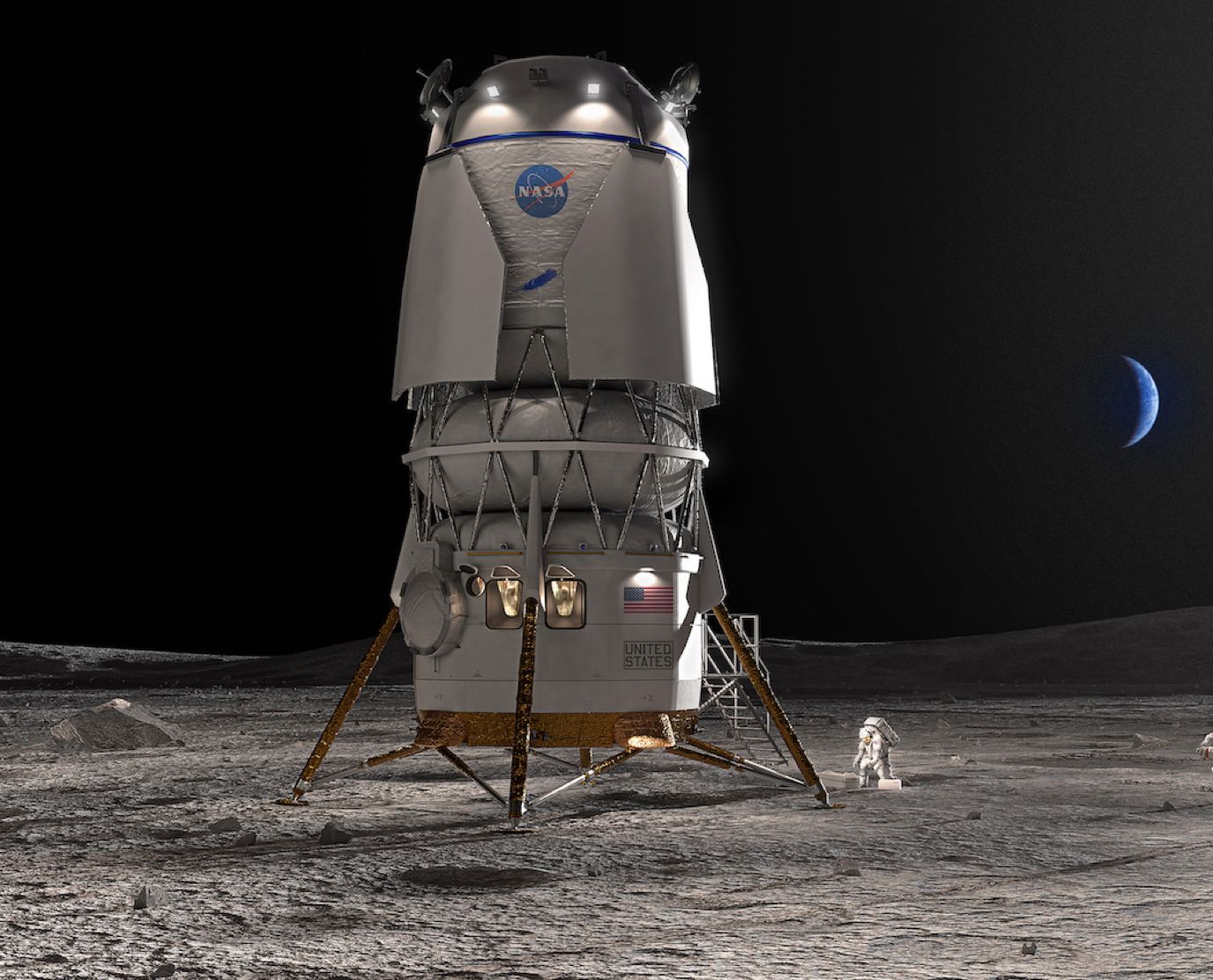
Blue Origin's Blue Moon Lander to be used for Artemis (Image - Blue Origin)
The Japanese Space Agency (JAXA) are remaining optimistic about reviving their SLIM lunar lander, after it was realised that the vehicle wasn’t generating power using it’s solar cells, after they became only the fifth nation to land softly on the Moon. Despite the concern that the lander may not reawaken, there is much to celebrate about the mission.
Shortly after arriving on the surface, the agency received all the data regarding the landing, and moreover, they achieved their primary goal, of a precise, pinpoint landing. "We proved that you can land wherever you want, rather than where you are able to," said Shinichiro Sakai, project manager for the lander.
It was revealed that it landed 55m metres from its intended target, but could have actually been more precise up to a distance of around 3m, if it wasn’t for experiencing some engine trouble. Nonetheless, this achievement opens the door for the possibility of more precise exploratory missions in future, which could be advantageous when e.g. looking to secure areas rich with resources, such as water.
Blue Origin and SpaceX have also taken steps forwards with their lunar ambitions, with NASA requesting them to begin work on cargo versions of their human landing systems, which they are currently developing to return humans to the surface of the Moon under the Artemis programme.
The cargo versions should be designed to deliver large amounts of payload to the lunar surface, opening the door for more rapid development of a lunar infrastructure, although no payloads have been identified yet.
The European Space Agency have also embarked on their journey towards establishing a permanent lunar base, after the announcement last year from ESA head, Josef Aschbacher, saying that Europe will “not miss the train” on economic opportunities in space, and a Moon base “will happen”. This week, architecture firm, Hassel, unveiled the design for a European lunar base, which incorporates the use of inflatable habitats, lifted from the surface and thus making minimal contact with abrasive lunar regolith.
With a busy agency and commercial lunar launch cadence in the coming years, combined with government funding and growing private investment, the lunar economy seems set on a growth trajectory.
Artemis Accords expands members, China outline plans for 2026 Moon mission
The US has continued to gather support for their regulatory framework for outer space, with Belgium this week becoming the 34th nation to sign up the Artemis Accords; the framework established in order to define best practices and responsible behaviour in space, also legitimising activities for resource extraction on places such as the Moon.
The Accords are also rivalling a similar Chinese plan, the International Lunar Research Station project (ILRS), which as gathered 11 members, including nations and institutes, and aims to construct a permanent lunar base in the next decade.
China have also outlined plans for their Chang’e-7 lunar mission, in a paper published this week. Due to launch in 2026, the mission aims to investigate regions of water ice in the lunar south pole, and will be made up of an orbiter, lander and a rover. Most importantly, their discoveries and analysis of water ice will be used to inform their plans for in-situ resource utilisation (ISRU), a critical component of establishing a permanent presence on the Moon.
With a heightening lunar race between the space superpowers of China and the US, a growing commercial presence and increasing competition, we can expect to see the continuing growth of these “space blocs”. But what else we can expect, especially with the lack of comprehensive universal legislative frameworks (such as the UN OST), is a potential clash between the two blocs, over issues such as appropriating territory on the Moon.
What will be vital in the coming years, to ensure ongoing peaceful uses of space, is increased dialogue between all parties. Or better still, would be agreement to work towards at least a basic legislative framework, perhaps governed by the UN, which reduces the risk of conflict in outer space. Otherwise, we may be greeted with the same story that humankind has written throughout history; where conflict arises over the potential of untapped resources.
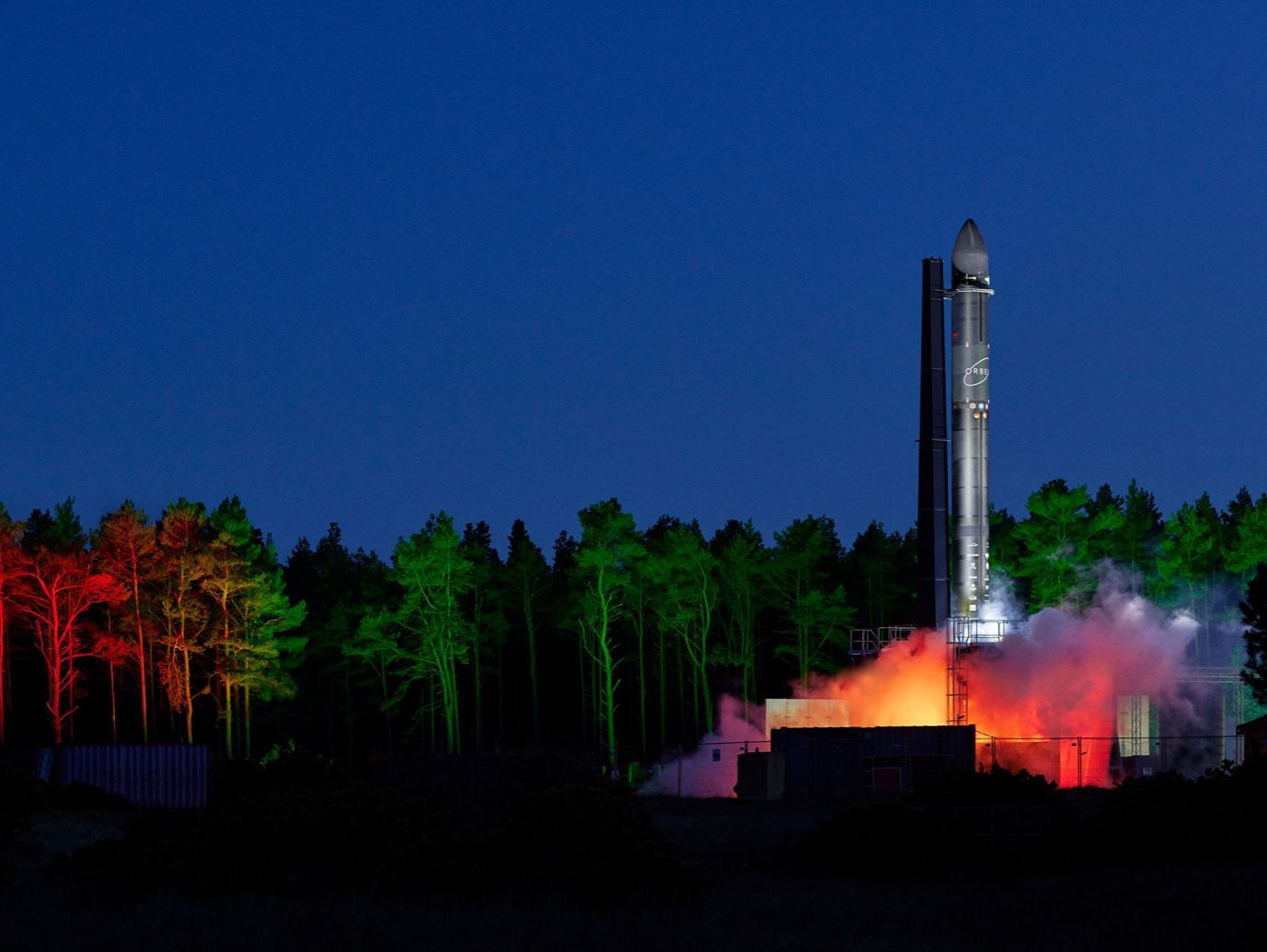
Orbex Prime Rocket (Image - Orbex)
Landspace Demonstrate SpaceX-style Rocket Landing, Blue Bring Together New Glenn, Europe Further Push Native Rocket Startups
Another Chinese space phenomena is that of their burgeoning commercial launch sector, which has been taking leaps and strides recently. Only last year we read that Shanghai announced plans to develop an industrial chain for commercial rocket production, with the ability to produce 50 rockets per year.
Additionally we saw launch startup Landspace sending satellites into orbit for the first time in December, as well as impressive funding rounds for Space Pioneer (now almost valued at $500 million), and Galactic Energy, who secured an additional $154 million also in December.
On Friday, Landspace achieved another milestone, in carrying out a “hop test” of their Zhuque-3 rocket. The test involved launching the vehicle vertically to an altitude of 350m, before it landed vertically 100m away, demonstrating similar technology that was pioneered by SpaceX over a decade ago.
Chinese startups may still be some way behind SpaceX in their drive for affordable, reusable launch technology, but the pace of development cannot go unnoticed.
Blue Origin have also seen positive developments towards their reusable New Glenn rocket, with Jeff Bezos announcing that the two stages of the vehicle have been mated for the first time. It is designed to carry up to 45 tons of payload to low Earth orbit (LEO), roughly twice that of a Falcon-9 (SpaceX).
Additionally, the company has secured a contract with the US Space Force to explore the potential uses of New Glenn for national security missions. Blue were awarded nearly $18 million for “National Security Space Launch Phase 3 Lane 2 early integration studies to assess launch vehicle trajectory and mission design, coupled launch loads, and integrated thermal environments to inform compatibility between launch vehicles and space vehicles for missions planned in fiscal years 2025 and 2026.”
Europe continues transition to commercial launch model
ESA is continuing its move towards a US model of sourcing commercial launch partners, (as opposed to developing their own vehicles), providing funding and acting as “anchor customers” for European launch startups.
On Tuesday ESA and the European Commission selected five launch startups to take part in a new programme, designed to boost demand for European companies. The companies involved are Isar Aerospace (Germany), PLD Space (Spain), Orbex (UK), Rocket Factory Augsburg (Germany) and Ariane.
The aim of the ticket initiative is to pool European demand from both ESA/EU and also national governments, encouraging a clear “European preference” for launch providers.
Additionally, French launch startup Latitude have this week raised an additional $30 million towards the development of their small launch vehicle, Zephyr, designed to put payloads of up to 100kg into low Earth orbit.
Launch non-dependence and having a sovereign access to space has been high on the cards for ESA for some time, with ongoing delays from Ariane for their new Ariane-6 meaning nations have had to rely on outside partners, such as SpaceX.
Europe is also seeing the growth of private investment in the space sector, with notable funding rounds in past year for companies such as Isar Aerospace, who raised an impressive $165 million in March, and the UK alone becoming the leading place for space investment, after only the US.
With delays from Ariane and severed access to Russian launch technology, Europe has been lagging behind its competitors. However, this renewed focus on commercial startups may prove to be the stimulus Europe has long needed, with 2024 set to witness more debut launches. SpaceX may be leading the pack, but in the coming months and years, we are set to see more diversification in the growing launch market, reflecting a space industry that is rapidly on the rise.
Share this article
External Links
This Week
News articles posted here are not property of ANASDA GmbH and belong to their respected owners. Postings here are external links only.









